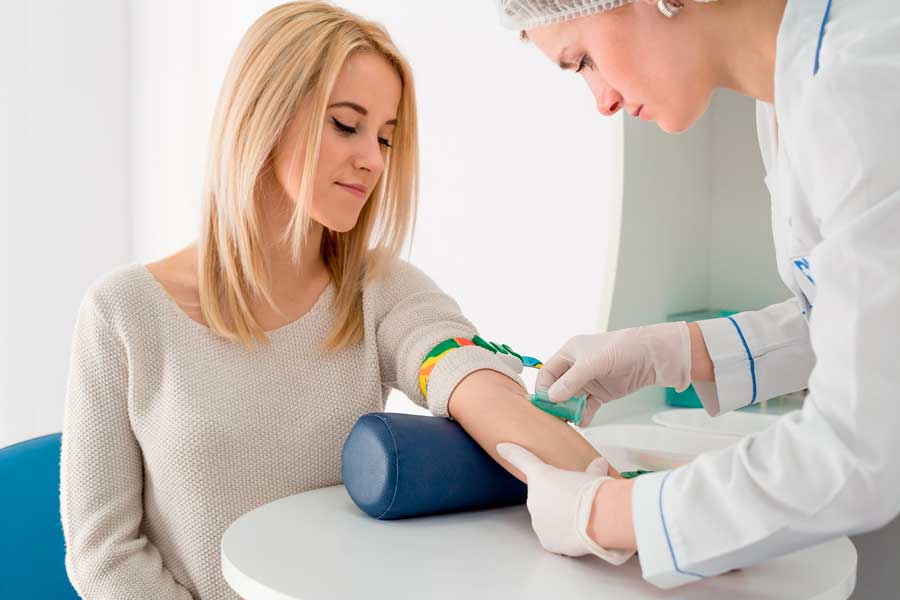Role of anti-mullerian hormone in reproductive medicine
During embryonic development, women have around 7-8 million germ cells, by the time of birth they have been reduced to 1-2 million and by the time they start ovulation cycles there are between 300-400,000, of which only 400-500 will ovulate, and there will also be a percentage that will be aneuploid (genetically abnormal), so we can say that it is a system that is not very efficient but that works.

How to assess ovarian reserve in order to establish an appropriate stimulation protocol for a patient?
One of the methods we use to evaluate ovarian reserve in women is to stratify them according to age groups, however, not all women of the same age have the same ovarian reserve, therefore, it is not the only variable to consider, as a woman at any age can be a normal responder, a poor responder or a hyper-responder. So, at the moment of establishing the appropriate stimulation protocol in each case, in a woman with a low response we want to obtain all the follicles possible, in a normal woman around 70-80% of them, however, in a hyper-responder the last thing we want is for all of them to develop.
We need to have a good idea of the reserve to see how to stimulate. Another reason why ovarian reserve assessment is important is that it helps predict the live birth rate after an IVF cycle.
It is important to know that from the time we have an oocyte until ovulation takes place it takes more than 220-230 days, and during this process only in the last 3 weeks, the follicles respond to gonadotrophins, i.e., they can be stimulated.
What is the role of the HMA?
It prevents a primordial follicle from being recruited and responding to gonadotrophin. AMH expression is highest in pre-antral follicles and small follicles, we may in the future use this property of AMH to antagonize it and favour follicular recruitment in low responders.
AMH is therefore produced by follicles up to 6-7mm, is a good indicator of follicle count and predictor of ovarian reserve as is antral follicle count by ultrasound. Both therefore predict response to gonadotropin stimulation.
AMH can also predict age at menopause, along with other factors such as phenotype, genotype, ethnicity ….
Is there variation in AMH levels?
Today we know that variations in AMH levels are not due to technical reasons, there is biological variation, there are variations in the cycle 20.7% and intercycle 28%. There are also isoforms of the hormone about which we know very little. We all want a good number of oocytes, the more oocytes the greater the chance of having a child born. The AMH value is a factor that has an impact not only on quantity, but also on oocyte survival, embryo quality and the probability of miscarriage, regardless of age and genetic load.
It is considered a normal value, and therefore a good response if 2-4ng/ml, hyper-responsive if greater than 4ng/ml and poor response if less than 1ng/ml. If the value is less than 1.09ng/ml, the survival of the oocytes is lower, their quality is lower, and the probability of miscarriage higher, so Renato Fanchi publishes that, regardless of age, the probability of miscarriage increases at lower AMH levels, it may be that the genetic load of these embryos is affected. La Marca also reports that regardless of age, AMH is related to the euploidy status of the embryo.
Main predictors of outcome after IVF cycle
HMA is not only a predictor of response but also of quality as it is related to the ploidy of the embryo. Thus, the prognosis of a 25-year-old woman with very low AMH may be worse than that of a 40-year-old woman with good AMH levels.
The ideal for an adequate study is to consider the AMH levels, the antral follicle count, as well as the FSH and estradiol levels and the age of the patient, so that we will have a much more complete evaluation of each case.
As for age, it has an impact on the quantity and also on the oocyte quality, it has a negative impact on the genetic load of the oocytes and on the other hand even when euploid embryos are transferred the implantation rate also decreases with age, therefore, it is not only the genetic load that matters.
With regard to FSH and estradiol levels, we should not discard them as markers of response, by measuring both hormones at the beginning of the cycle we see that, if estradiol is low, the higher the FSH, the poorer the oocyte quality, the lower the rate of gestation and the lower the rate of birth of the child.
The antral follicle count (AFC) by ultrasound, especially if they are homogeneous in size, helps us to predict response with high reliability, “what you see is what you get”.

Written by:
Dr. Elena Puente
Medical director of Clinica Fertia
Bibliography
- Tarasconi B,Tadro T, Ayoubi JM, Belloc S, De Ziegler D, Fanchin R. Serum antimüllerian hormone levels are independently related to miscarriage rates after in vitro fertilization-embryo transfer.Fertil Steril.2017;108.518-524.
- La Marca, Minasi G,Sighinolfi G,Greco P, Argento C, Grisendi V, Fiorentino F, Greco E. Female age, serum antimüllerian hormone level,and number of oocytes affect the rate and number of euploid blastocysts in vitro fertilization/ intracitoplasmatic sperm injection cycles.Fertil Steril.2017;108:777-783.
